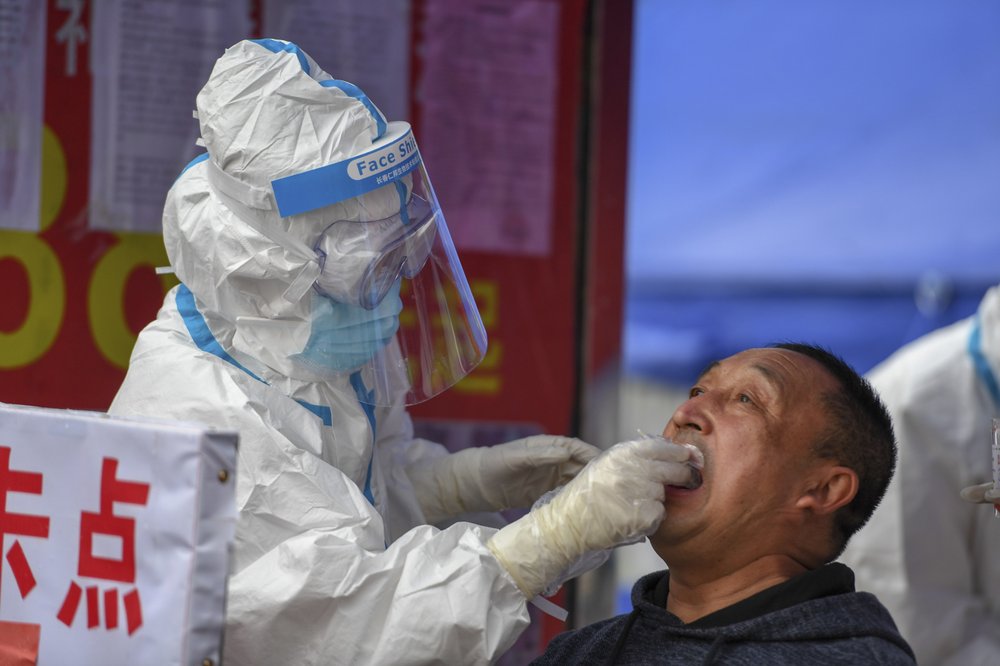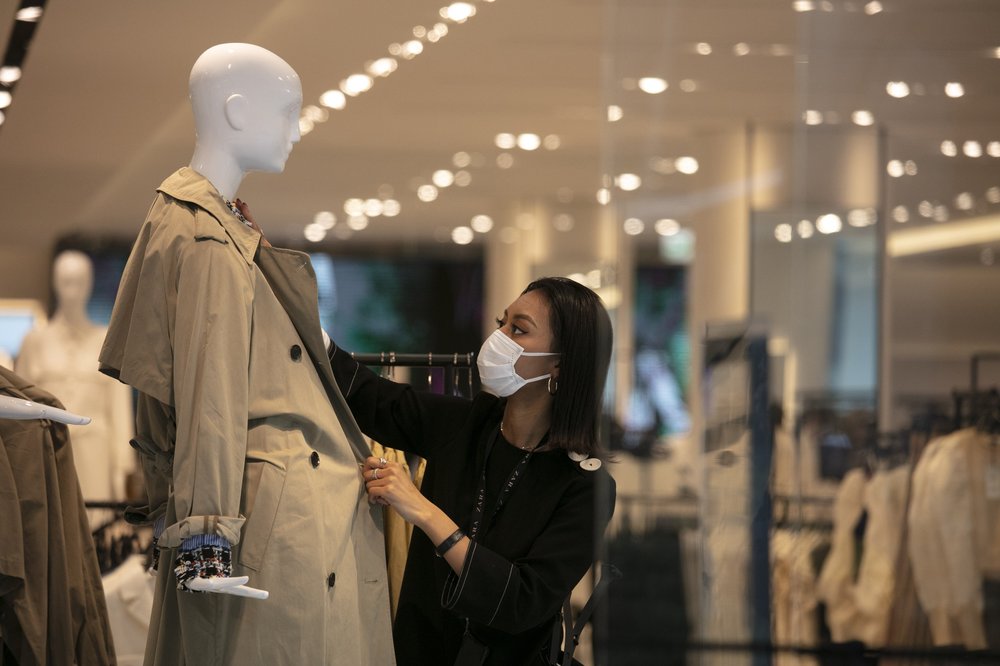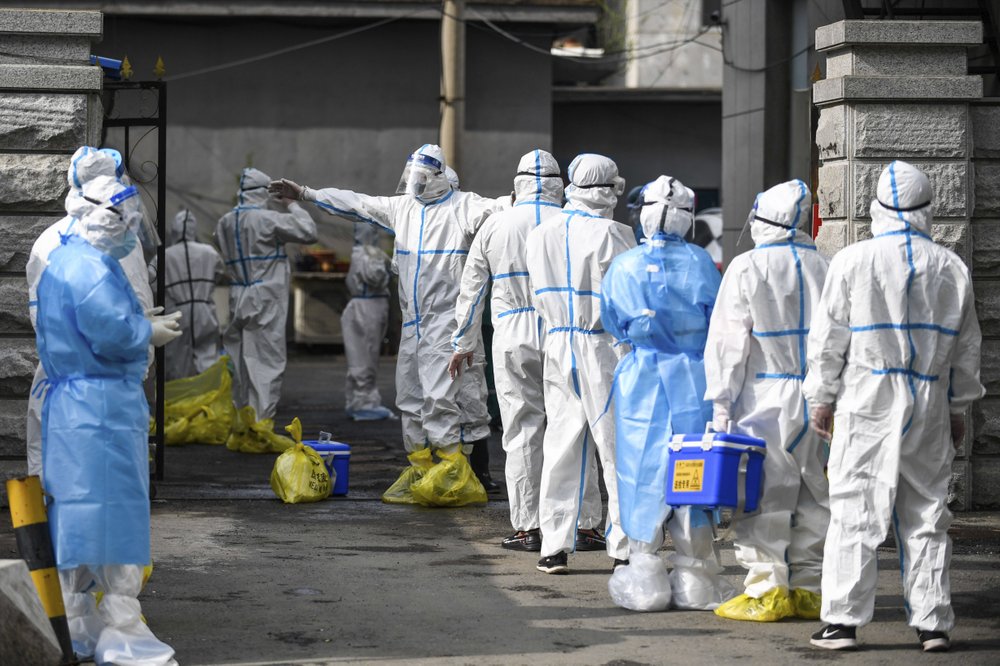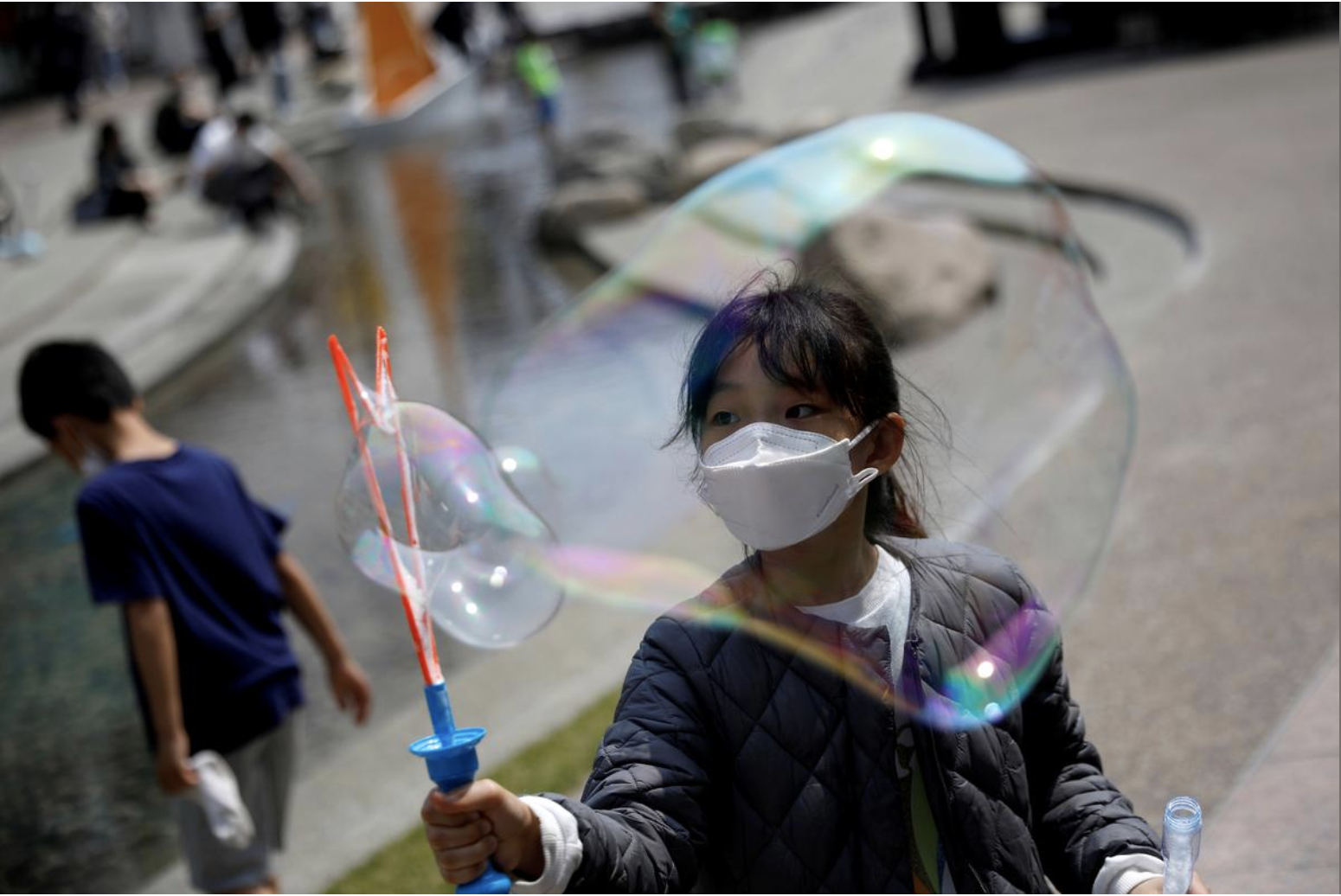Editor's note: This is the 64th article in the COVID-19 Global Roundup series. Here is the previous one.
Japan's Yomiuri newspaper reported on Sunday that China and South Korea have consulted Japan about easing border controls on business travelers to help revive the economy.
The idea, already implemented between South Korea and China, would allow a fast-track entry for business people if they test negative for the novel coronavirus before departure and after arrival, the newspaper said.

A medical worker collects sample for COVID-19 testing at the Tongji community in Shulan in northeastern China's Jilin Province, May 17, 2020. /Xinhua
A medical worker collects sample for COVID-19 testing at the Tongji community in Shulan in northeastern China's Jilin Province, May 17, 2020. /Xinhua
On Friday, the health ministers of the three countries took part in a video conference on ways to work together in the global campaign against the coronavirus pandemic, South Korean officials said. This was the first meeting between top health officials of the East Asian neighbors since the coronavirus outbreak.
During the meeting, the health officials of South Korea, China and Japan agreed to cooperate in tackling the coronavirus and developing a vaccine.
South Korean Health Minister Park Neung-hoo proposed the idea of expanding movement among the three countries of essential figures, including scientists, doctors and business people.
"The issue requires discussions of pan-government agencies. The government will explore possible ways (to expand movement) on the diplomatic side," Sohn Young-rae, a government official, said in a briefing.

a department store employee with a mask dresses a mannequin in Tokyo, May 1, 2020. /AP
a department store employee with a mask dresses a mannequin in Tokyo, May 1, 2020. /AP
All three countries are optimistic they have got their outbreaks under control and are looking to get their economy back on track while keeping a wary eye out for any second waves of infection.
But Tokyo is extra cautious about relaxing border controls at this point due to fears of another spike in infections, as well as a lack of test kits for travelers.
Prime Minister Shinzo Abe on Thursday lifted his state of emergency for 39 of Japan's 47 prefectures, easing curbs on 54 percent of the population. However, the greater Tokyo area - which accounts for one-third of the nation's economy - and other major cities remain under restrictions.
Besides for Tokyo and its surrounding eastern prefectures of Saitama, Chiba and Kanagawa, the state of emergency still covers as the northern prefecture of Hokkaido and the western neighboring prefectures of Osaka, Kyoto and Hyogo.
The government will likely treat the four eastern prefectures as one region and the three western prefectures as another because people usually travel across those borders every day.
Tokyo confirmed five new infections on Sunday, marking the first time since March 22 that the Japanese capital has recorded five or fewer cases. Osaka confirmed no new infections on Sunday, registering the first time since March 9 that the prefecture has had zero cases.
A government official says the steady fall in daily confirmed infections is a good sign, but added it is still necessary to assess whether the downward curve will continue from Monday and beyond.
The government plans to ask a panel of experts for its opinions and determine whether to lift the state of emergency in the eight prefectures around Thursday.

Medical workers wait to be disinfected as they line up to submit the COVID-19 samples for nucleic acid test at the center for disease control and prevention in Fengman District of Jilin City in northeastern China's Jilin Province, May 17, 2020. /Xinhua
Medical workers wait to be disinfected as they line up to submit the COVID-19 samples for nucleic acid test at the center for disease control and prevention in Fengman District of Jilin City in northeastern China's Jilin Province, May 17, 2020. /Xinhua
China reported three new domestic COVID-19 cases and four new imported cases on Sunday, according to China's National Health Commission (NHC). No new deaths were reported.
The commission also reported 18 new asymptomatic patients.
The total number of confirmed cases on the Chinese mainland stands at 82,954, the cumulative death toll at 4,634, and 448 asymptomatic patients are under medical observation.
The Chinese health authorities said that 11 patients were discharged from hospitals on Sunday, bringing the total number of recovered cases to 78,238.

A girl, wearing a protective mask to avoid the spread of the coronavirus, plays with bubbles at a shopping mall in Gimpo, South Korea May 1, 2020. /Reuters
A girl, wearing a protective mask to avoid the spread of the coronavirus, plays with bubbles at a shopping mall in Gimpo, South Korea May 1, 2020. /Reuters
Meanwhile, the South Korean government says the number of coronavirus cases linked to a cluster that originated in Seoul nightclubs has risen to 168.
Officials reported on Sunday that the first chain of four linked cases can be trace back to the Itaewon cluster infections which originated in early May.
One of the people infected here was a prison officer in Seoul. Government officials say the officer attended a wedding with a friend who had visited a karaoke establishment.
The officer had contact with about 280 people, including colleagues and inmates. That prompted the closure of some courts in Seoul on Friday for disinfection. Trials scheduled for the day were postponed.
Officials say another of those four cases involved someone whose family member had been at a restaurant with a person who had used a karaoke room. Someone who had been at the clubs had earlier visited that same karaoke room.
The government has been urging people to avoid karaoke rooms because of the risk of infections.
(With input from agencies)